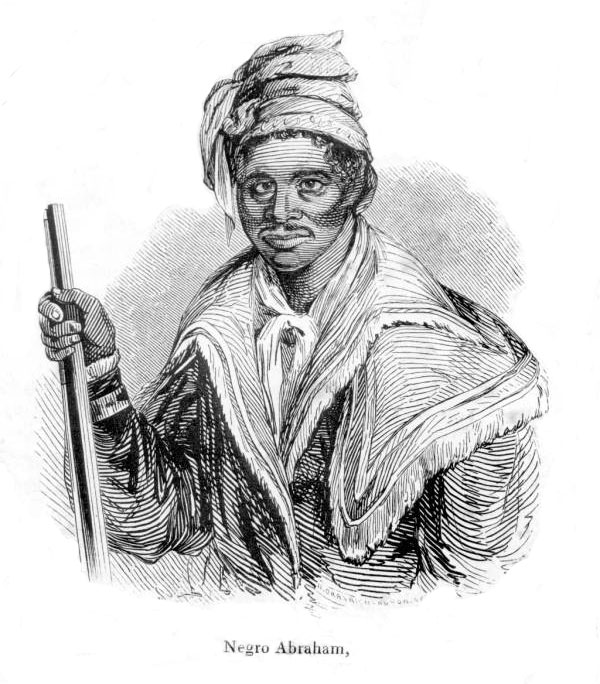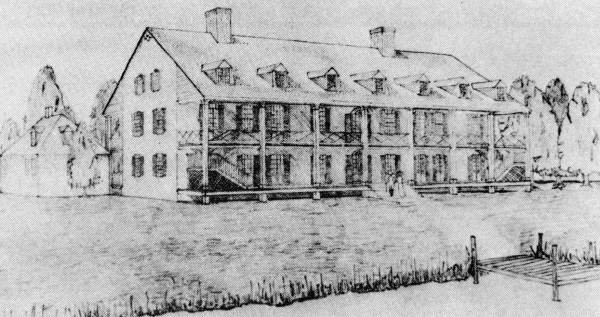|
Louis Pacheco
Louis (Luis) Fatio Pacheco (December 26, 1800 – ?) was an Afro-Spanish enslaved person who became known in 19th century Spanish Florida for his connection to the Black Seminole community. Biography Early life and career Pacheco was born December 26,1800 in New Switzerland on the plantation of Francis Philip Fatio Sr.—an associate and possibly a partner in Panton, Leslie, & Company. Pacheco's father Adam was a skilled slave working a lot with his hands as a carpenter, building boats, and driver. He was also noted to be a "very intelligent and ambitious man." With Pacheco's father working as a sought after slave, Pacheco received some privilege's allowing him to learn how to read and write. This is where he skill for learning multiple languages developed by the time he reached adulthood he knew French, Spanish, and English. Pacheco learned the Seminole language from his brother who was kidnapped by the Indians but was later returned to the plantation. In 1811 Francis Fat ... [...More Info...] [...Related Items...] OR: [Wikipedia] [Google] [Baidu] |
Afro-Spaniards
Afro-Spaniards are Spanish citizens of Sub-Saharan African descent. The term may include Spaniards of Afro-Caribbean and African American descent, but often excludes Black Spaniards of Latin American origin. It almost always excludes Spaniards of North African origin. The specific number of Spaniards of Sub-Saharan Africa origin is unknown due to the fact that the Spanish government does not collect data on ethnicity or racial self-identification. Defining Afro-Spaniards There are currently 1,301,296 people residents in Spain who were born in countries of the African continent, excluding the 1,802,810 born in Ceuta, Melilla and the Canary Islands which are Spanish provinces or part of Andalucia such is the case with Ceuta and Melilla. They are geographically located in Africa. Out of these, 294,343 are Spanish citizens and 1,006,953 are foreign residents. The large majority of these originate in Morocco. There are 934,046 Moroccan born residents in Spain of which 223,590 ar ... [...More Info...] [...Related Items...] OR: [Wikipedia] [Google] [Baidu] |
Spanish Florida
Spanish Florida ( es, La Florida) was the first major European land claim and attempted settlement in North America during the European Age of Discovery. ''La Florida'' formed part of the Captaincy General of Cuba, the Viceroyalty of New Spain, and the Spanish Empire during Spanish colonization of the Americas. While its boundaries were never clearly or formally defined, the territory was initially much larger than the present-day state of Florida, extending over much of what is now the southeastern United States, including all of present-day Florida plus portions of Georgia, Alabama, Mississippi, North Carolina, South Carolina, and Louisiana. Spain's claim to this vast area was based on several wide-ranging expeditions mounted during the 16th century. A number of missions, settlements, and small forts existed in the 16th and to a lesser extent in the 17th century; they were eventually abandoned due to pressure from the expanding English and French colonial settlements, the collap ... [...More Info...] [...Related Items...] OR: [Wikipedia] [Google] [Baidu] |
Black Seminoles
The Black Seminoles, or Afro-Seminoles are Native American-Africans associated with the Seminole people in Florida and Oklahoma. They are mostly blood descendants of the Seminole people, free Africans, and escaped slaves, who allied with Seminole groups in Spanish Florida. Many have Seminole lineage, but due to the stigma of having very dark or brown skin and kinky hair, they all have been categorized as slaves or freedmen. Historically, the Black Seminoles lived mostly in distinct bands near the Native American Seminole. Some were held as slaves, particularly of Seminole leaders, but the Black Seminole had more freedom than did slaves held by whites in the South and by other Native American tribes, including the right to bear arms. Today, Black Seminole descendants live primarily in rural communities around the Seminole Nation of Oklahoma. Its two Freedmen's bands, the Caesar Bruner Band and the Dosar Barkus Band, are represented on the General Council of the Nation. Other cent ... [...More Info...] [...Related Items...] OR: [Wikipedia] [Google] [Baidu] |
Francis Philip Fatio
Francis Philip Fatio (''Spanish'' Francisco Phelipe Fatio) (1724-1811), born in Switzerland, was a soldier for France, a viscount in Sardinia, a merchant in London, and a prominent planter in East Florida during both the British period and the second Spanish period. Francis Philip Fatio was born in 1724 in Vevey, Switzerland. He joined the Swiss Guard, and fought for France in the War of Austrian Succession. He later moved to the Kingdom of Sardinia, his wife's native land, where he was made a viscount. In 1759 Fatio joined his brother in commerce in London.Parker (1988). 46. British period in East Florida In 1769 Francis Fatio invested with two partners, Thomas Dunnage and John Francis Rivas, in plantations in East Florida. In 1771 Francis Fatio moved with his family to East Florida to become the managing partner of New Castle Plantation, which specialized in producing indigo. New Castle Plantation was located on the St. Johns River in what is now the Arlington neighborhood of ... [...More Info...] [...Related Items...] OR: [Wikipedia] [Google] [Baidu] |
Panton, Leslie & Company
Panton, Leslie & Company was a company of Scottish merchants active in trading in the Bahamas and with the Native Americans of what is now the Southeastern United States during the late 18th and early 19th centuries. The origins of Panton, Leslie & Company are in the firm Moore and Panton, in Savannah, Georgia, of which William Panton became a partner in 1774. In 1775, the British, who had acquired Florida by the terms of the Treaty of Paris in 1763, chose him to do their trading with the Creeks. He then joined with John Forbes to create Panton and Forbes. Politically, Panton was a loyalist; he was not in favor of American independence. When Britain in 1783 accepted American independence, he had to leave the country, and his property in the United States was confiscated. As a new base for trading with the Native Americans he chose Florida, which was just completing 20 years as a British colony. Its capital, St. Augustine, was not far from Savannah. Panton, Leslie, & Company ... [...More Info...] [...Related Items...] OR: [Wikipedia] [Google] [Baidu] |
Dade Battle
The Dade battle (often called the Dade massacre) was an 1835 military defeat for the United States Army. The U.S. was attempting to force the Seminoles to move away from their land in Florida and relocate to Indian Territory (in what would become Oklahoma). Amidst a war between the Government of the United States and the Seminole two U.S. Army companies numbering 103 men under the command of Major Francis L. Dade were ambushed by approximately 180 Seminole warriors as they marched from Fort Brooke on Tampa Bay to reinforce Fort King in Ocala. Only three U.S. soldiers survived the attack, and one died of his wounds the following day. The battle sparked the Second Seminole War, which ended in 1842. By that time, most Seminoles had surrendered and been transported out of Florida while a smaller portion had moved well south to the edges of the Everglades. There was no formal treaty ending the conflict. The battle On December 23, 1835, two U.S. companies of 110 men (including soldi ... [...More Info...] [...Related Items...] OR: [Wikipedia] [Google] [Baidu] |



